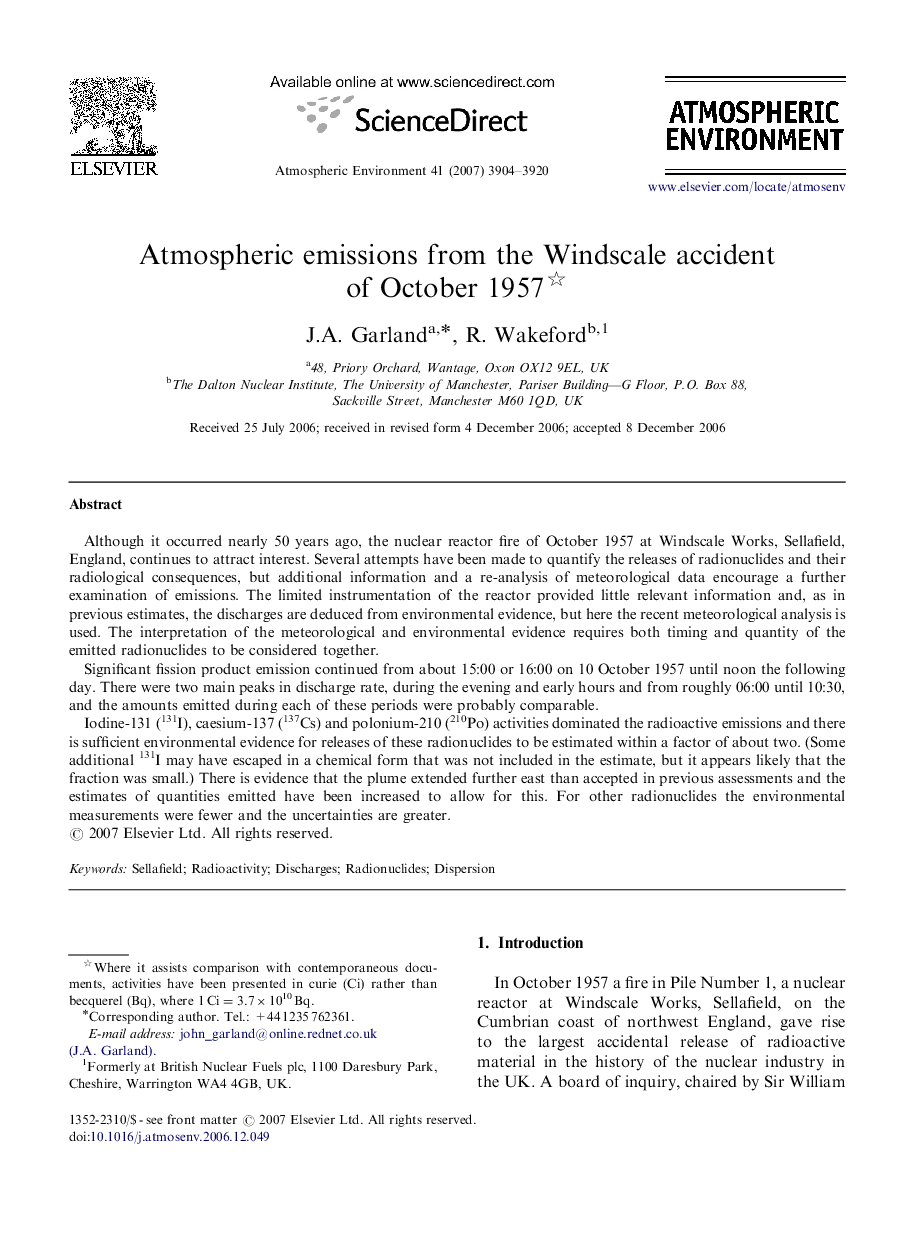| Article ID | Journal | Published Year | Pages | File Type |
|---|---|---|---|---|
| 4442699 | Atmospheric Environment | 2007 | 17 Pages |
Although it occurred nearly 50 years ago, the nuclear reactor fire of October 1957 at Windscale Works, Sellafield, England, continues to attract interest. Several attempts have been made to quantify the releases of radionuclides and their radiological consequences, but additional information and a re-analysis of meteorological data encourage a further examination of emissions. The limited instrumentation of the reactor provided little relevant information and, as in previous estimates, the discharges are deduced from environmental evidence, but here the recent meteorological analysis is used. The interpretation of the meteorological and environmental evidence requires both timing and quantity of the emitted radionuclides to be considered together.Significant fission product emission continued from about 15:00 or 16:00 on 10 October 1957 until noon the following day. There were two main peaks in discharge rate, during the evening and early hours and from roughly 06:00 until 10:30, and the amounts emitted during each of these periods were probably comparable.Iodine-131 (131I), caesium-137 (137Cs) and polonium-210 (210Po) activities dominated the radioactive emissions and there is sufficient environmental evidence for releases of these radionuclides to be estimated within a factor of about two. (Some additional 131I may have escaped in a chemical form that was not included in the estimate, but it appears likely that the fraction was small.) There is evidence that the plume extended further east than accepted in previous assessments and the estimates of quantities emitted have been increased to allow for this. For other radionuclides the environmental measurements were fewer and the uncertainties are greater.
